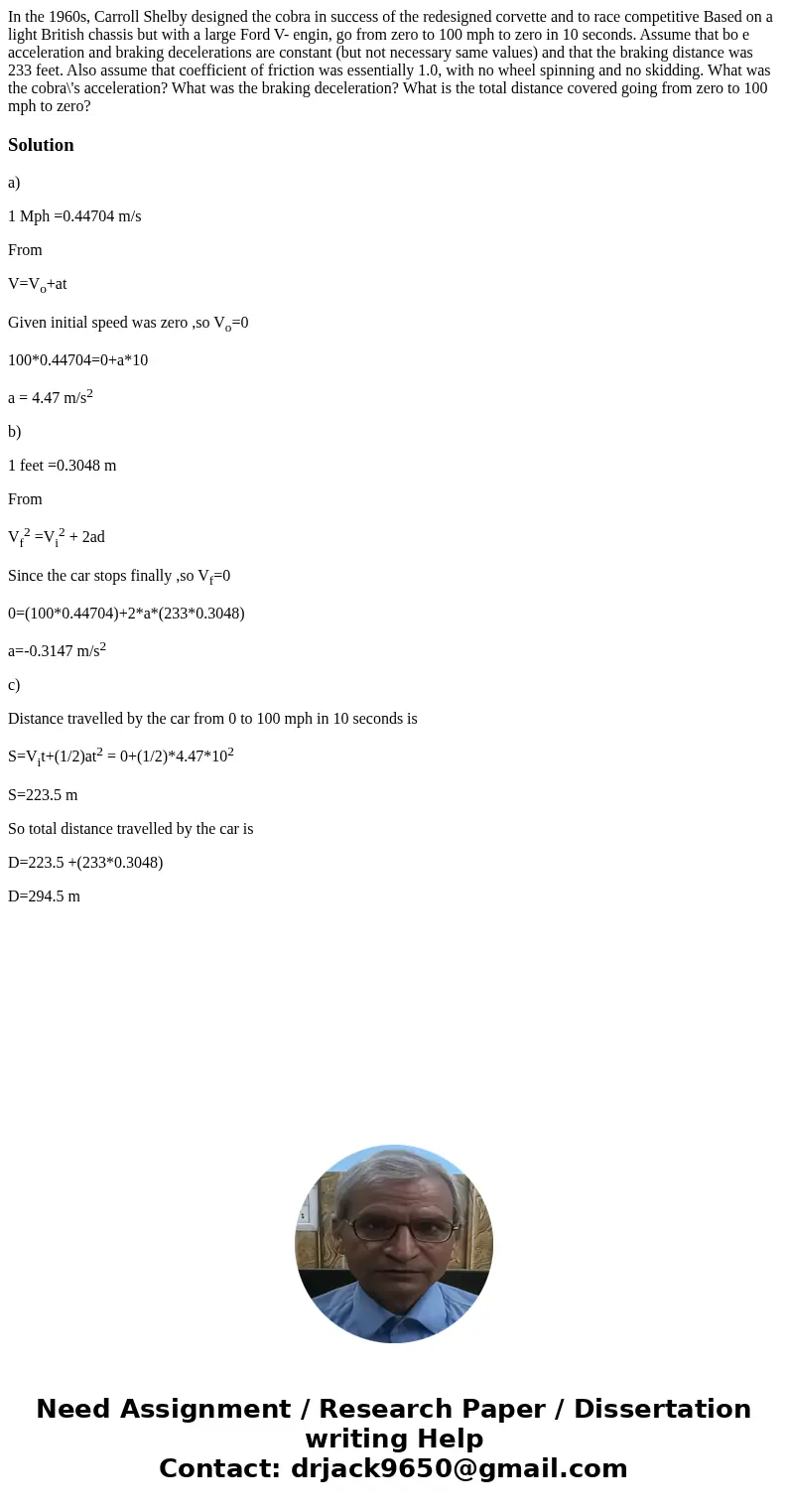In the 1960s Carroll Shelby designed the cobra in success of
In the 1960s, Carroll Shelby designed the cobra in success of the redesigned corvette and to race competitive Based on a light British chassis but with a large Ford V- engin, go from zero to 100 mph to zero in 10 seconds. Assume that bo e acceleration and braking decelerations are constant (but not necessary same values) and that the braking distance was 233 feet. Also assume that coefficient of friction was essentially 1.0, with no wheel spinning and no skidding. What was the cobra\'s acceleration? What was the braking deceleration? What is the total distance covered going from zero to 100 mph to zero?
Solution
a)
1 Mph =0.44704 m/s
From
V=Vo+at
Given initial speed was zero ,so Vo=0
100*0.44704=0+a*10
a = 4.47 m/s2
b)
1 feet =0.3048 m
From
Vf2 =Vi2 + 2ad
Since the car stops finally ,so Vf=0
0=(100*0.44704)+2*a*(233*0.3048)
a=-0.3147 m/s2
c)
Distance travelled by the car from 0 to 100 mph in 10 seconds is
S=Vit+(1/2)at2 = 0+(1/2)*4.47*102
S=223.5 m
So total distance travelled by the car is
D=223.5 +(233*0.3048)
D=294.5 m

 Homework Sourse
Homework Sourse